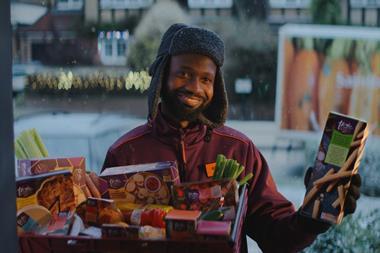Sainsbury is ramping up its cost-cutting drive as it enters the final leg of its three-year turnaround strategy with a move to switch some distribution to rail.
The move comes as Sainsbury attempts to sort out its finances, using £350m from a property refinancing scheme to plug its pensions deficit.
The transport scheme is currently focused on deliveries from its Rugby distribution centre to its Langlands Park depot in Scotland, with this one rail initiative understood to represent a significant saving.
Sainsbury’s chief executive Justin King has already laid out plans to chop £50m from the multiple’s supply chain by March next year.
Transport manager Steve Macaree devised the changes as part of the company-wide drive to cut out unnecessary costs.
He told The Grocer: “We were investigating where we could save money, not just for the Rugby site, but for the whole of Sainsbury.”
Rail use by other retailers had already
proved cost-effective, added Macaree.
“Goods are loaded on to a container in Rugby and taken 12 miles to Daventry where the container is put on a train.
“We then bring back an empty container, so it’s like a shuttle service. We are not just saving money, we are saving time and cutting fuel emissions.”
Despite the cost-cutting, suppliers told The Grocer this week that although Sainsbury was now being put on the spot to deliver on its targets, it had not made new moves to squeeze its supplier base. “It’s been business as usual so far this year,” said one supplier. “But as we go into the new financial year, we’ll have to wait and see what its plans are.”
A Citigroup analyst said that although Sainsbury had promised operating margin improvements from the second half of this year onwards, these might not materialise if pricing deteriorated. “It has delivered improvements in sales but this has been driven through a much higher cost base,” he said. “The company has yet to prove it can deliver margin and sales growth simultaneously.”
Meanwhile, Sainsbury has been bombarding its e-mail database with bogof offers to pull shoppers into stores.
Rachel Barnes
The move comes as Sainsbury attempts to sort out its finances, using £350m from a property refinancing scheme to plug its pensions deficit.
The transport scheme is currently focused on deliveries from its Rugby distribution centre to its Langlands Park depot in Scotland, with this one rail initiative understood to represent a significant saving.
Sainsbury’s chief executive Justin King has already laid out plans to chop £50m from the multiple’s supply chain by March next year.
Transport manager Steve Macaree devised the changes as part of the company-wide drive to cut out unnecessary costs.
He told The Grocer: “We were investigating where we could save money, not just for the Rugby site, but for the whole of Sainsbury.”
Rail use by other retailers had already
proved cost-effective, added Macaree.
“Goods are loaded on to a container in Rugby and taken 12 miles to Daventry where the container is put on a train.
“We then bring back an empty container, so it’s like a shuttle service. We are not just saving money, we are saving time and cutting fuel emissions.”
Despite the cost-cutting, suppliers told The Grocer this week that although Sainsbury was now being put on the spot to deliver on its targets, it had not made new moves to squeeze its supplier base. “It’s been business as usual so far this year,” said one supplier. “But as we go into the new financial year, we’ll have to wait and see what its plans are.”
A Citigroup analyst said that although Sainsbury had promised operating margin improvements from the second half of this year onwards, these might not materialise if pricing deteriorated. “It has delivered improvements in sales but this has been driven through a much higher cost base,” he said. “The company has yet to prove it can deliver margin and sales growth simultaneously.”
Meanwhile, Sainsbury has been bombarding its e-mail database with bogof offers to pull shoppers into stores.
Rachel Barnes



















No comments yet